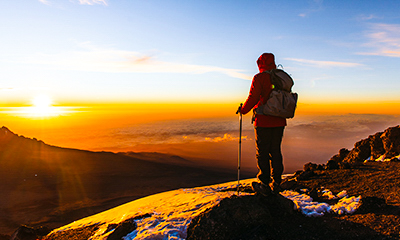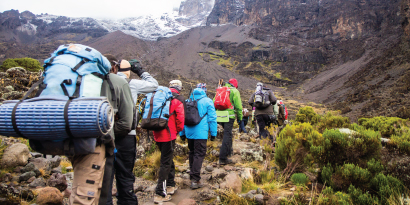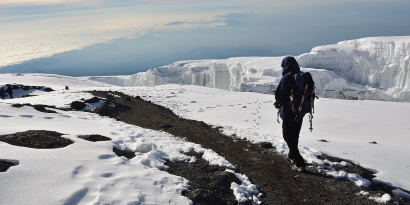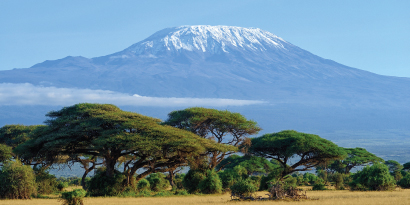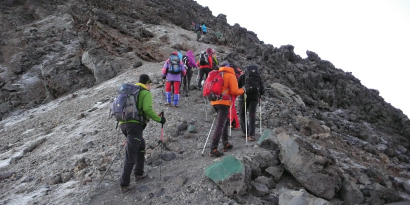Usambara Mountain
Usambara Mountain
The Usambara Mountains, located in northeastern Tanzania, are a breathtakingly scenic range known for their lush landscapes, diverse flora and fauna, charming villages, and rich cultural heritage. Here are key points about the Usambara Mountains
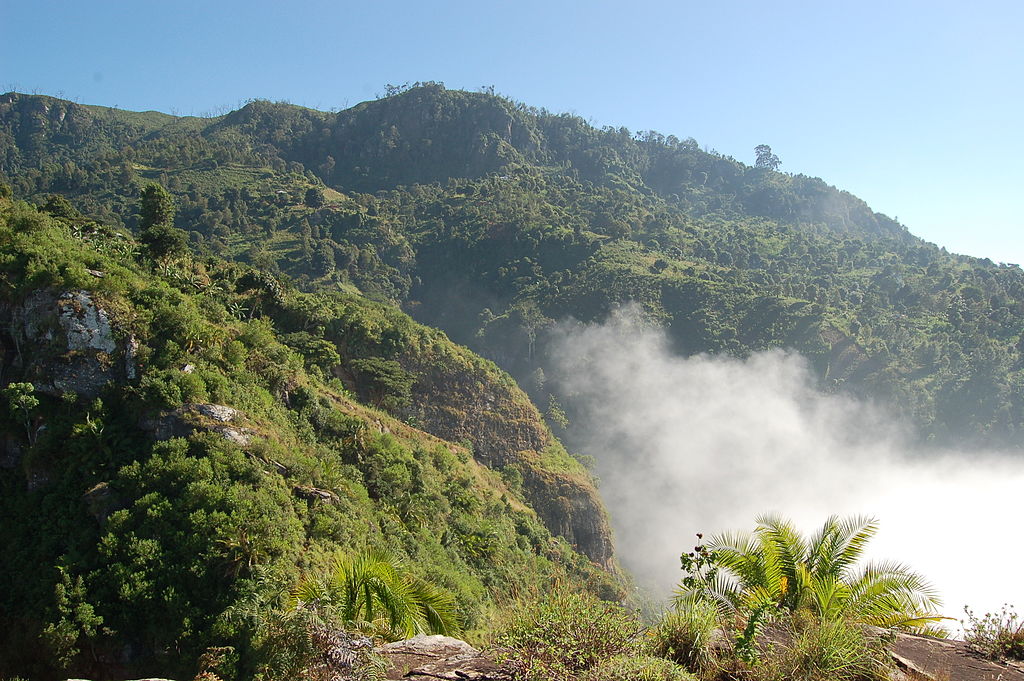
Key features of Usambara Mountain
Geography: The Usambara Mountains consist of two main ranges, the West Usambara and the East Usambara, running roughly parallel to the coastline of the Indian Ocean. These mountains boast stunning peaks, deep valleys, and verdant forests.
-
-
-
Biodiversity: The region is a biodiversity hotspot, home to a wide array of plant and animal species, including several endemic species. The mountains support diverse ecosystems ranging from tropical rainforests to montane forests, housing various birds, butterflies, monkeys, and other wildlife.
-
Scenic Beauty: The Usambara Mountains are renowned for their picturesque beauty. Travelers can enjoy stunning viewpoints, serene landscapes, cascading waterfalls, and beautiful trails ideal for hiking and exploration.
-
Cultural Experience: The mountains are inhabited by diverse ethnic groups, including the Shambaa, Zigua, and Sambaa people. Visitors can immerse themselves in local culture by visiting villages, interacting with residents, learning about traditional customs, and experiencing daily life in these communities.
-
Hiking and Trekking: The Usambara Mountains offer excellent hiking and trekking opportunities for adventurers of various skill levels. Trails lead through lush forests, past picturesque villages, and up to panoramic viewpoints offering breathtaking vistas of the surrounding landscape.
-
Lush Agriculture: The fertile soils of the Usambara Mountains support vibrant agricultural practices. Visitors can witness terraced farms cultivating a variety of crops such as coffee, tea, bananas, vegetables, and spices. Agritourism experiences are available in some villages.
-
Village Tours and Homestays: Travelers have the option to participate in village tours, where they can engage in cultural activities, visit local markets, learn about traditional craftsmanship, and even opt for homestays to experience daily life firsthand.
-
Local Handicrafts and Markets: The region is known for its locally produced handicrafts, including wood carvings, textiles, and pottery. Visitors can explore colorful markets to purchase authentic souvenirs and support local artisans.
-
Climate and Weather: The climate in the Usambara Mountains is generally cool and pleasant due to the higher elevation. Temperatures vary depending on the altitude, so it's advisable to check the weather before planning a visit.
-
-
Best Time to Visit
- Overview
- Things To Do
- Things To Consider
- Different Exercise For Usambara Mountain
- Cultural Experiences
The best time to visit the Usambara Mountains in Tanzania largely depends on your preferences for weather, outdoor activities, and cultural experiences. However, the general recommendation for an optimal visit to the Usambara Mountains is during the dry seasons, which typically offer more favorable conditions for hiking, exploration, and cultural immersion. Here are the two primary seasons to consider:
-
Dry Season (June to October):
- June to October is considered the peak dry season in Tanzania, including the Usambara Mountains. This period experiences minimal rainfall, providing excellent weather conditions for outdoor activities like hiking and trekking.
- The clear skies and mild temperatures during these months offer stunning views and comfortable conditions for exploring the mountain trails and enjoying panoramic vistas.
-
Short Dry Season (January to February):
- Another good time to visit the Usambara Mountains is during the short dry season, particularly in January and February. These months often have less rainfall, making it suitable for outdoor adventures and cultural experiences.
- The weather tends to be relatively cooler during this time, which can be pleasant for hiking and exploring the area without the intense heat of the wetter months.
Keep in mind that while the dry seasons offer better hiking conditions, the Usambara Mountains can be visited year-round. However, the wetter months, particularly from March to May and November to December, may experience more rainfall, which can make trails muddy, slippery, and less suitable for hiking. Moreover, heavy rains might hinder some cultural activities or access to certain areas.
Ultimately, the best time to visit the Usambara Mountains depends on your preferences regarding weather, outdoor activities, and cultural experiences. If you prioritize optimal hiking conditions and clearer skies, planning your visit during the dry seasons is recommended. Regardless of the time of year, the Usambara Mountains offer a unique and diverse experience that combines natural beauty, cultural immersion, and outdoor adventures.
The Usambara Mountains in Tanzania offer a variety of activities for visitors seeking outdoor adventures, cultural experiences, and breathtaking natural beauty. Here are some things to do while visiting the Usambara Mountains:
-
Hiking and Trekking: Explore the diverse trails that wind through the mountains. Hiking options cater to different skill levels, offering opportunities for both leisurely walks and more challenging treks. Some popular routes include the Irente Viewpoint, Lushoto to Usambara Peak, and the Mambo Viewpoint.
-
Cultural Village Tours: Immerse yourself in the local culture by visiting villages inhabited by the Shambaa, Zigua, and Sambaa people. Take guided tours to learn about traditional practices, visit local markets, witness craftsmanship, and even participate in cultural activities.
-
Waterfall Visits: Discover the beauty of the Usambara Mountains’ waterfalls. Visit spectacular waterfalls like the Irente Waterfall, Soni Waterfall, and Mkuzi Waterfall. These natural wonders offer picturesque settings for relaxation and photography.
-
Nature Walks and Birdwatching: Take leisurely nature walks through the lush forests and rich vegetation. The Usambara Mountains are a paradise for birdwatchers, with numerous bird species to observe, including endemics like the Usambara weaver and the Usambara eagle owl.
-
Agricultural Tours: Explore the fertile lands of the Usambara Mountains and learn about local agriculture. Visit terraced farms where crops like coffee, tea, bananas, vegetables, and spices are grown. Engage in hands-on experiences such as coffee picking or tea processing.
-
Scenic Viewpoints: Enjoy panoramic views from various viewpoints scattered across the mountains. The Irente Viewpoint, Mambo Viewpoint, and Mazumbai Forest Reserve offer stunning vistas of the surrounding landscapes and valleys.
-
Homestay Experiences: Stay with local families for an immersive cultural experience. Engage in daily life activities, participate in cooking traditional meals, and learn about the customs and traditions of the communities.
-
Visit Botanical Gardens: Explore the Amani Nature Reserve and Botanical Gardens, which showcase diverse plant species, including rare and endemic flora. Guided tours allow visitors to learn about the rich biodiversity of the region.
-
Shopping for Local Crafts: Visit local markets and handicraft shops to purchase authentic souvenirs like wood carvings, textiles, pottery, and other handcrafted items made by local artisans.
-
Relaxation and Wellness: Unwind and relax amidst the serene natural surroundings. Some accommodations offer yoga sessions, spa treatments, or peaceful settings ideal for relaxation.
These activities offer a glimpse into the natural beauty, rich culture, and diverse experiences that the Usambara Mountains have to offer, making it a captivating destination for travelers seeking both adventure and cultural immersion.
When planning a visit to the Usambara Mountains in Tanzania, it’s essential to consider several factors to ensure a pleasant and rewarding experience. Here are important things to consider:
-
Weather and Climate: The climate in the Usambara Mountains can vary based on altitude. Higher elevations tend to be cooler than lower regions. Check weather forecasts and pack appropriate clothing for varying conditions, as temperatures can fluctuate throughout the day.
-
Physical Fitness: Some hiking trails in the Usambara Mountains can be challenging. Consider your fitness level and choose trails that match your abilities. Prepare by engaging in regular exercise to improve stamina and endurance.
-
Guided Tours and Local Guides: Consider hiring a knowledgeable local guide for hiking or village tours. Local guides provide valuable insights into the area’s culture, history, and wildlife while ensuring safety on trails.
-
Accommodation: Choose accommodations that suit your preferences. Options range from guesthouses and lodges to camping sites. Book accommodations in advance, especially during peak seasons, to secure your stay.
-
Health Precautions: Consult a healthcare professional before your trip and ensure necessary vaccinations and medications are up-to-date. Bring insect repellent and consider mosquito nets, especially for areas at lower elevations.
-
Altitude Consideration: If you plan to hike to higher elevations, be aware of the potential effects of altitude sickness. Ascend gradually to allow your body to acclimatize and stay hydrated.
-
Pack Appropriately: Pack essentials such as sturdy hiking boots, comfortable clothing, rain gear, sunscreen, a hat, insect repellent, a first-aid kit, and sufficient water and snacks for hikes. A flashlight or headlamp can be useful.
-
Respect Local Customs: Embrace the local culture respectfully. Ask for permission before taking photographs of people or their property. Dress modestly and follow cultural norms, especially when visiting villages or engaging with locals.
-
Trail Conditions and Safety: Be cautious of trail conditions, especially during or after rainfall when paths can become slippery. Stick to marked trails, and inform someone about your hiking plans before venturing out.
-
Waste Management: Practice responsible tourism by disposing of waste properly. Carry out all trash from hiking trails and villages to help maintain the natural beauty of the area.
-
Travel Insurance: Consider obtaining travel insurance that covers activities like hiking and trekking, as well as medical emergencies, to ensure you’re prepared for unexpected situations.
By considering these factors before your journey to the Usambara Mountains, you can better prepare yourself for a safe, enjoyable, and culturally enriching experience amidst the stunning landscapes and diverse communities of this picturesque region in Tanzania.
-
Preparing for a hike in the Usambara Mountains involves getting physically fit and building endurance for the varying terrains. Here are different exercises that can help you prepare:
-
Cardiovascular Training: Engage in cardio exercises such as brisk walking, running, cycling, or using a stair climber. These exercises improve your endurance, preparing your heart and lungs for the demands of uphill hiking.
-
Leg Strengthening Exercises: Focus on exercises that strengthen your leg muscles. Squats, lunges, calf raises, step-ups, and leg presses help build strength in your quadriceps, hamstrings, calves, and glutes, essential for navigating uphill and downhill trails.
-
Core Strengthening: Work on your core muscles to improve stability and balance. Planks, Russian twists, bicycle crunches, and stability ball exercises help strengthen your core, assisting in maintaining balance on uneven terrain.
-
Hiking Practice: Gradually increase the duration and intensity of your hikes. Start with shorter trails and progressively tackle longer and more challenging routes to simulate the conditions of hiking in the Usambara Mountains.
-
Interval Training: Incorporate interval training into your routine. Alternating between high-intensity bursts and periods of rest helps improve overall endurance and stamina.
-
Stair Climbing: Climbing stairs or using a stair-climbing machine can mimic the uphill sections of hiking. It strengthens your leg muscles and cardiovascular system, preparing you for the inclines you’ll encounter on the trails.
-
Balance and Stability Exercises: Perform exercises that enhance balance and stability. Practice single-leg stands, balance board exercises, and yoga poses to improve stability, crucial for navigating uneven paths.
-
Flexibility and Stretching: Incorporate stretching exercises into your routine to improve flexibility. Focus on stretching the lower body muscles, including calves, hamstrings, quadriceps, and hip flexors, to prevent injuries and improve mobility.
-
Trail-Specific Training: If possible, find local trails or inclines that simulate the terrain of the Usambara Mountains and train on them to get accustomed to the conditions you’ll face during the hike.
-
Rest and Recovery: Allow your body adequate rest between workouts to prevent overtraining and facilitate muscle recovery. Adequate rest is crucial for muscle repair and overall fitness improvement.
Remember to start your exercise routine gradually and progress at a pace that suits your fitness level. Consult with a fitness professional or a hiking guide to tailor a training plan that best prepares you for hiking in the Usambara Mountains.
-
Experiencing the rich cultural heritage of the Usambara Mountains in Tanzania involves engaging with diverse local communities and immersing yourself in their traditions. Here are cultural experiences you might encounter:
-
Village Visits: Explore the villages inhabited by the Shambaa, Zigua, and Sambaa people. Take guided tours to learn about their daily lives, customs, and traditions. Visiting local homes provides insight into their unique way of life.
-
Cultural Performances: Enjoy traditional dances, songs, and performances showcasing the vibrant cultural heritage of the communities. Local groups often perform dances accompanied by rhythmic music and colorful attire.
-
Community Interaction: Engage with locals by participating in community activities. This could involve helping with farming, cooking traditional meals, learning craft-making techniques, or joining in celebrations and ceremonies.
-
Cultural Workshops: Participate in workshops where you can learn traditional crafts such as pottery, weaving, beadwork, or wood carving. Local artisans often welcome visitors to observe or try their hand at these crafts.
-
Cultural Festivals and Events: Check if there are any local festivals or events happening during your visit. These occasions provide an authentic insight into the culture, often featuring traditional rituals, dances, and ceremonies.
-
Culinary Experiences: Discover the local cuisine by joining cooking classes or sampling traditional dishes. Engage in food preparation, using locally sourced ingredients, and learning about traditional cooking methods.
-
Homestay Experiences: Stay with a local family for a more immersive cultural experience. This allows you to participate in daily activities, dine on home-cooked meals, and interact closely with community members.
-
Market Visits: Explore local markets bustling with activity. Experience the vibrant atmosphere, interact with vendors, and shop for handmade crafts, fresh produce, spices, and other locally produced goods.
-
Learning Cultural Traditions: Embrace the opportunity to learn about age-old traditions and customs. Gain knowledge about rites of passage, marriage ceremonies, folklore, and storytelling that are integral to the local cultures.
-
Language and Communication: Try learning a few basic words or phrases in the local language. Attempting to communicate in the local dialect often fosters deeper connections and appreciation for the culture.
-
Respect and Cultural Etiquette: Respect local customs, traditions, and cultural norms. Ask for permission before taking photographs, dress modestly, and follow guidelines provided by your hosts or guides.
Engaging in these cultural experiences in the Usambara Mountains offers a deeper understanding and appreciation for the diverse heritage, traditions, and way of life of the local communities, creating meaningful connections and memories during your visit.

